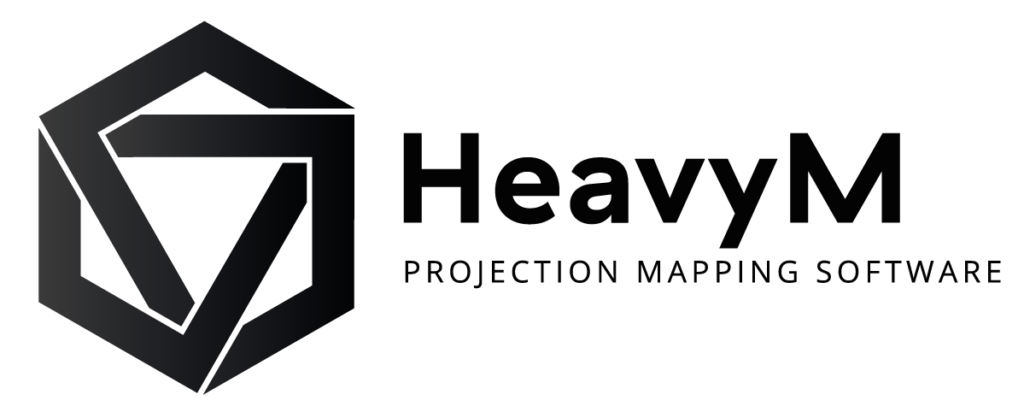Did You Know? #1 – Antiquity, Renaissance, Enlightenment
Origins I: Antiquity, Renaissance, Enlightenment
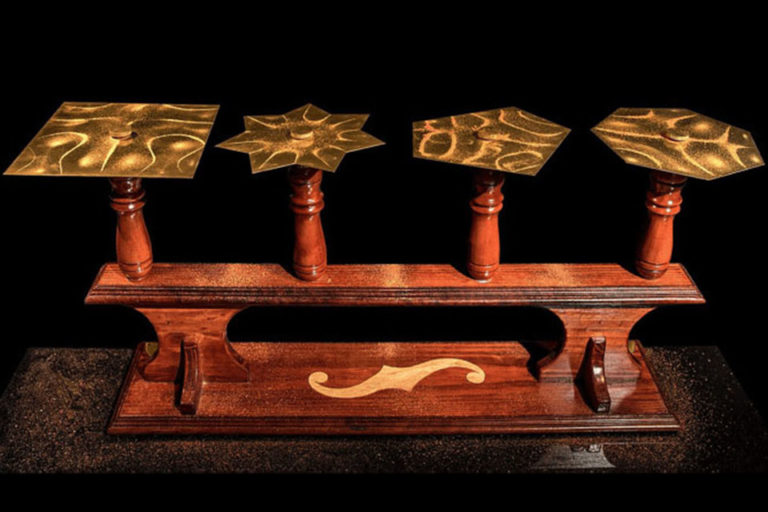
Did you know? is a column out of the box, as many different stories, to share knowledge around the influences of video mapping!
For this first serie, we chose a return to the roots. The links between video mapping and music are very new, appeared in the 20th century… Really? Because the records to bring sound and color closer are very old, we are going to start at 5 B.C.! HeavyM selected for you original inventions and concepts of pioneers, as milestones in our history. True visionaries have leaded a metaphysical, mystical quest, seeking for universal coherence.
5th BC • Harmony of the Spheres
Elaborated by Pythagore
A theory bringing stars and music forward to create the first known system of harmonic proportions. It is the idea that the distances between the 7 planets discovered at the time (Moon, Mercury, Venus, Sun, Mars, Saturn, Jupiter) match with musical intervals. In the broadest sense, the Harmony of the Spheres refers to celestial music, a consciousness of the cosmos.
1550 • First harpsichord with different colors
Drawn by Gioseffo Zarlino
For the first time, a musical theorist has illustrated his theory of the chromatic scale.
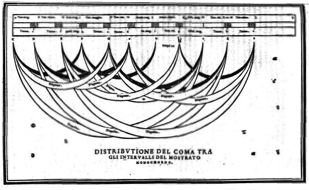
Zarlino’s studies for intervals
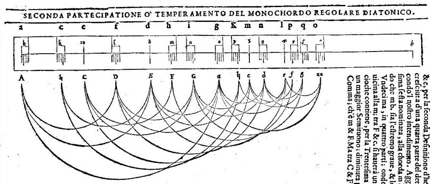
Zarlino’s studies for intervals
1650 • Musurgia Universalis
Written by Athanasius Kircher
A great treaty on music written by one of the first Egyptologists – an eminent researcher! for whom sound and light are two manifestations of one and the same phenomenon.
He compares sound to a simiam lucis: a monkey of light. He attempts to assemble, for the first time, a range of 6 notes with a range of 8 colors.
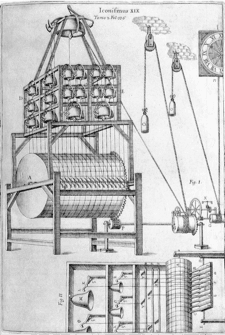
Carillon, A. Kircher, Musurgia Universalis, 1650
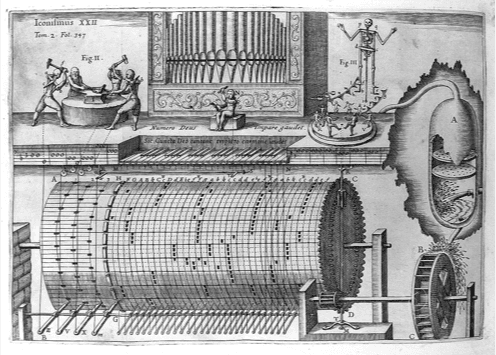
Hydraulic organ, A. Kircher, Musurgia Universalis, 1650
1704 • Opticks
Theorised by Isaac Newton
This Optical Treaty on reflections, refractions, inflections, and colors of light is one of the greatest scientific works in history. It is the first connection between the colors of the rainbow (purple, indigo, blue, green, yellow, orange, red) and the diatonic range (do, re, mi, fa, sol, la, si). To learn more, read the work of Bernard Valeur on the subject.
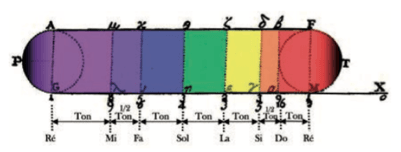
Diagram and chromatic circle extracted from Newton’s Opticks, © Bernard Value
*Colors have been added to the scanned drawings
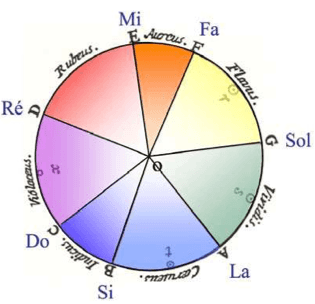
Diagram and chromatic circle extracted from Newton’s Opticks, © Bernard Value
*Colors have been added to the scanned drawings
1735 • The Ocular Harpsichord
Imagined by Louis Bertrand Castel
The first electromechanical instrument to combine successions of colors and sounds. Castel wanted to create a harpsichord to make the sound visible. “The sounds that are sensitive and present to the eyes, as they are in the ears, so that a deaf can enjoy and judge the beauty of a music, as well as he who hears,” Mercury of France, 1725.
He also imagines a twelve-octave “organ with colors” associated with one hundred and forty-four colors, thanks to a system of glasses, mirrors and candles. Castel still provides an “olfactory harpsichord”, a “harpsichord-show” for fireworks and, since 1726, a “harpsichord for all the senses” … His contemporaries often called him a mad scientist!
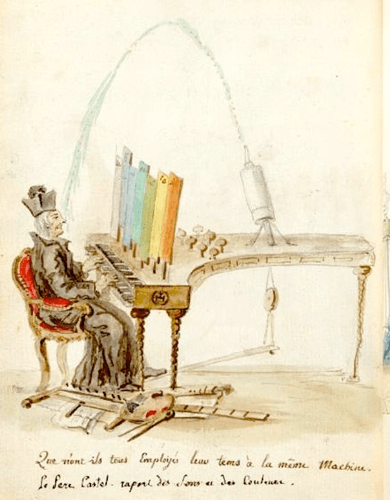
A caricature of Louis-Bertrand Castel’s inventio by Charles Germain de Saint Aubin
1759 • The electric harpsichord
Created by Jean Baptiste Thillaie Delaborde
The first harpsichord to be built all the way, based on a very modern mechanism of alarm bells, Leyden bottles and a carillon and which, in the dark, apparently produced sparks!
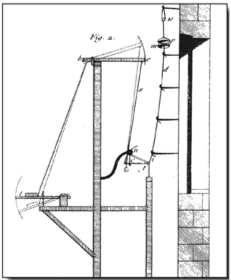
Drawings of mechanism by J.B. Thillaie Delaborde
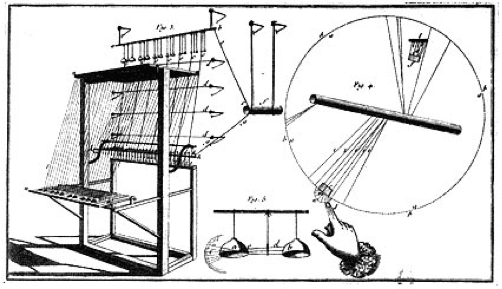
Drawings of mechanism by J.B. Thillaie Delaborde
1790 • The Euphone
Réalized by Ernst Chladni
A new manifest instrument of the creation of modern acoustics. The set of glass cylinders and Klangfi guren (sound figures) reveals the traces of the sound frequencies on thin plates covered with quartz powder. These regular patterns stand out in a really current graphism of harmonic intervals.
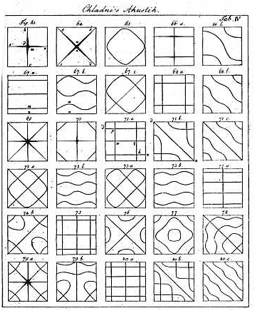
Chladni figures
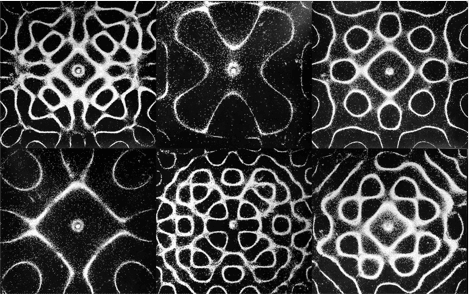
Chladni figures
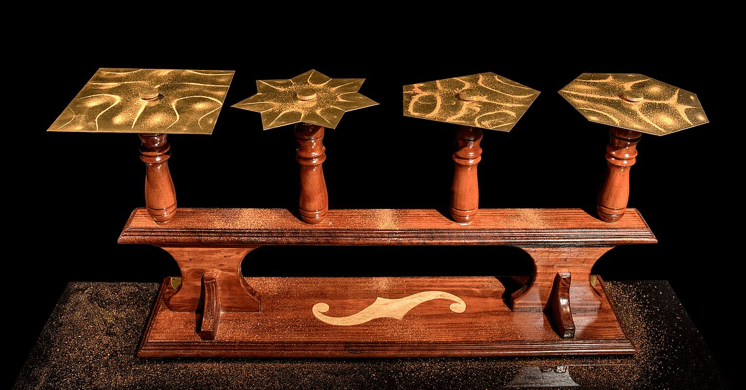
Mathematical object for illustrating Chladni figures on display at Matematica IME-USP au Portugal
To be continued, Origins II, 19th century
– Séverine for HeavyM Team
Ready to start video mapping for free?
